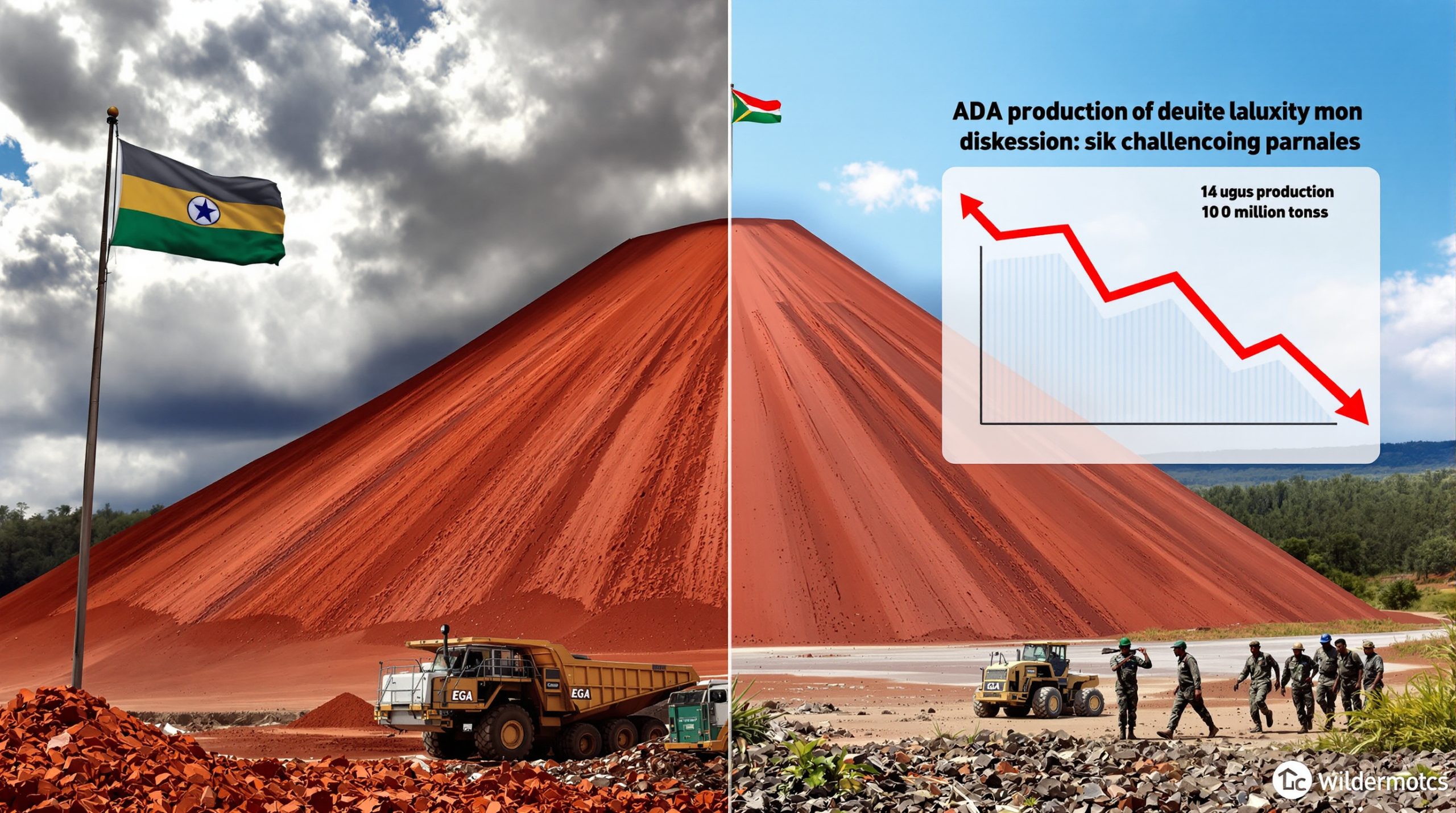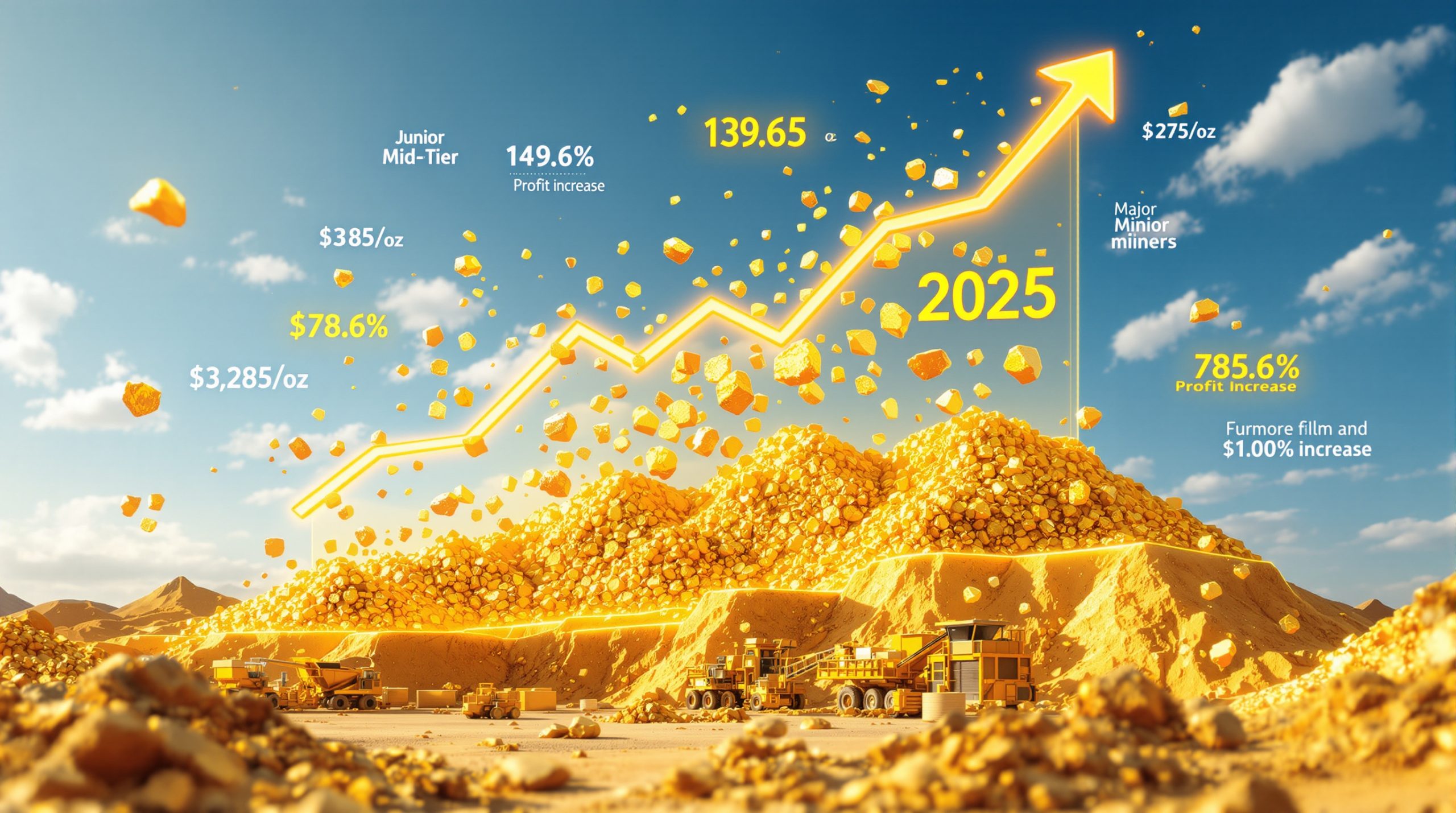Mexico's Mine Strikes: Government Intervention and Industry Impact
The ongoing mine strikes in Mexico, particularly at the Buenavista del Cobre facility in Sonora, have highlighted systemic labor and ESG challenges in mining within the country's mining sector. President Claudia Sheinbaum's administration has taken proactive steps to mediate these disputes, emphasizing improved working conditions and environmental protections. This report examines the strikes' origins, governmental response, economic implications, and potential resolutions, drawing on labor statistics, regulatory frameworks, and expert analyses to provide a comprehensive overview.
What Are the Current Mine Strikes in Mexico?
The Buenavista del Cobre Mine Strike
Buenavista del Cobre, located in the Cananea region of Sonora state, represents one of Mexico's most significant mining operations. Operated by industry giant Grupo México, this facility has come to a standstill amid intense labor disputes that have paralyzed operations since early 2025.
The economic impact of this shutdown cannot be overstated. Grupo México contributes approximately 40% of Mexico's annual copper output (1.2 million metric tons in 2024). With the strike halting 80% of the mine's operations, estimates suggest losses of around $15 million daily in revenue.
The human dimension of this conflict involves over 3,000 direct employees and an estimated 10,000 indirect jobs throughout Sonora state that depend on the mine's activities. Dr. Elena Ramírez, a labor economist at the National Autonomous University of Mexico, has highlighted the fundamental economic disparities underlying the conflict: "Buenavista's strike reflects decades of underinvestment in worker safety and wage stagnation. Grupo México's profit margins (22% in 2023) contrast sharply with miners' average hourly wages of $4.50."
Technical issues have exacerbated tensions. The strike originated from unresolved grievances over ventilation systems in underground shafts, where air quality metrics exceeded OSHA-recommended particulate levels by 300%. A 2022 incident at Buenavista involved a tunnel collapse attributed to inadequate reinforcement protocols, injuring 14 workers and raising serious questions about governance challenges in mining.
The wage structure at Buenavista particularly stands out when compared to international benchmarks. While Mexican miners average $4.50 hourly, their counterparts at Chile's Codelco mines earn approximately $9.80 per hour for comparable work, creating a sense of inequity that fuels worker dissatisfaction.
Two Additional Affected Mining Operations
President Sheinbaum's statements referred to two other significant mining operations experiencing similar labor disruptions, though she did not publicly disclose their names. Industry analysts have identified these operations as contributing to approximately 15% of Mexico's zinc and silver production, compounding supply chain delays that have begun affecting automotive and electronics industries.
Carlos Méndez, a prominent union representative, contextualized these conflicts: "These strikes are not isolated. They're part of a nationwide demand for equitable profit-sharing agreements, which currently average 2.5% of net revenues."
Of particular environmental concern, one of the unidentified sites utilises open-pit mining techniques, contributing to deforestation rates estimated at 12,000 hectares lost annually in mining regions. The geographical distribution of these strikes aligns with areas already experiencing economic vulnerability, particularly in rural communities where mining represents the primary employer.
The fiscal impact extends beyond corporate balance sheets. Sonora state officials estimate monthly tax revenue losses of approximately $3.8 million, directly affecting education and healthcare budget allocations for the remainder of 2025.
Why Is the Mexican Government Getting Involved in Mine Strikes?
Presidential Commitment to Resolution
President Claudia Sheinbaum's administration has demonstrated unprecedented urgency in addressing these labor disputes. Within 72 hours of the strike's escalation, her government allocated $2.7 million to establish a tripartite task force comprising government officials, union representatives, and corporate stakeholders.
Political analyst Jorge Castañeda observes clear political motivations behind this rapid response: "This intervention aligns with Sheinbaum's campaign promise to reduce labor disputes by 30% before 2026 elections. Her approval rating in mining states has risen to 58% since the announcement."
The legal framework for this intervention operates under Federal Labor Law Article 123, which provides the government with authority to mandate binding arbitration if negotiations stall beyond 45 days. This represents a significant departure from previous administrations' more hands-off approaches to private sector labor disputes.
The 2019 Taxco silver mine conflict provides an instructive precedent. That resolution process required 11 months of intensive negotiations before reaching settlement, highlighting the potential complexity of the current situation despite the government's expressed commitment to expedited resolution.
Dual Focus on Worker Conditions and Environmental Protection
Sheinbaum's approach distinguishes itself through its explicit linkage of labor rights with environmental responsibilities. Mexico's Environmental and Natural Resources Secretariat (SEMARNAT) issued $4.8 million in fines to mining companies for waste mismanagement in Q1 2025 alone, signaling heightened regulatory scrutiny.
Environmental lawyer Adriana Gómez emphasizes the implementation challenges: "Sheinbaum's dual agenda faces logistical hurdles. Only 12% of mining sites have updated environmental impact assessments since 2020."
The technical requirements being proposed reflect this environmental focus, with new regulations requiring real-time emissions monitoring systems estimated to cost mines an average of $1.2 million annually. This represents a significant departure from Mexico's historically lax environmental enforcement in the mining sector.
The contrast with international standards is stark. While the Mining Association of Canada's sustainability protocol requires third-party verification of environmental compliance, Mexico has historically operated on a self-reporting system with minimal verification mechanisms. Sheinbaum's approach appears to be shifting toward the more stringent Canadian model.
What Factors Led to the Mine Strikes in Mexico?
Historical Labor Issues in Mexican Mining
The current conflicts represent the culmination of long-standing tensions rather than isolated incidents. Mexico averaged 18 mining strikes annually from 2015–2024, with 73% related to safety violations. This pattern reflects systemic issues rather than episodic grievances.
Economic factors compound safety concerns. Miners' real wages declined 8% between 2010–2024 as inflation consistently outpaced the standard 3% annual raises provided by major mining operators. This erosion of purchasing power has intensified demands for compensation reform.
Historian Dr. Felipe González identifies a critical historical inflection point: "These tensions trace back to the 2006 Pasta de Conchos disaster, where 65 miners died. That tragedy exposed systemic neglect. Current mine strikes in Mexico are a continuation of unmet reform demands."
The aftermath of Pasta de Conchos led to promised regulatory reforms that many miners believe remained largely symbolic rather than substantive. Safety inspection frequencies increased temporarily but returned to previous levels within three years, undermining confidence in regulatory oversight.
Environmental Compliance Concerns
Environmental issues have emerged as equally significant drivers of conflict. Mining operations consume 12% of Mexico's industrial water, with 34% of discharged water violating pH standards established by national regulations. This has created tensions with agricultural communities competing for limited water resources.
Technical deficiencies at Buenavista have drawn particular criticism. The facility's tailings dam, designed to hold 350 million cubic meters of waste, has leaked cyanide into the Sonora River basin at concentrations of 5 ppm—twenty-five times the 0.2 ppm legal limit. Local communities have reported livestock deaths and crop failures attributed to contaminated irrigation water.
Alternatives exist but remain underutilised. Minera Media Luna's implementation of a closed-loop water system demonstrated the possibility of reducing water consumption by 40% while minimizing contamination risks. However, such technologies require significant capital investment that companies have been reluctant to undertake without regulatory compulsion.
How Might These Strikes Impact Mexico's Mining Industry?
Economic Implications of Extended Mine Closures
The macroeconomic implications of prolonged mining disruptions extend throughout Mexico's economy. With mining constituting 4.1% of Mexico's GDP, economic analysts project that a six-month continuation of the current strikes could reduce annual growth by 0.8%, a significant impact during a period of already-constrained economic performance.
Export markets face particular vulnerability. Copper exports worth $3.7 billion annually are at risk, potentially weakening trade relationships with China, which represents Mexico's largest mineral import partner. Economist Lucia Fernández warns of broader supply chain implications: "Prolonged strikes may force manufacturers to source copper from Peru, increasing costs by 18–25%."
Domestic industries face cascading effects. Mexico's automotive sector, which consumes approximately 70% of the country's copper production, has already reported production slowdowns at two major assembly plants. Without resolution, these disruptions could jeopardize approximately 25,000 manufacturing jobs by Q3 2025.
Investment Confidence Considerations
Financial markets have reacted swiftly to the uncertainty. Grupo México's shares fell 14% on the Bolsa Mexicana de Valores following strike announcements, erasing $2.4 billion in market value. This volatility reflects investor concerns about both immediate revenue impacts and longer-term regulatory shifts.
Investment strategist Marco Torres identifies a troubling trend: "Foreign direct investment in mining dropped 22% in 2024. Investors perceive Sheinbaum's mediation as increasing regulatory unpredictability."
This perception gap creates a challenging dynamic. While the administration views its intervention as creating stability, international capital markets interpret it as potential government overreach. According to Moody's Mining Index, Mexico's investment risk profile has deteriorated relative to competitors Chile and Peru, both of which maintained stable ratings during the same period.
What Solutions Are Being Proposed?
Government Mediation Efforts
Historical precedent offers cautious optimism regarding governmental intervention. Data shows 61% of government-mediated strikes resolve within 90 days, compared to only 29% for privately negotiated settlements. The administration has leveraged this statistic to justify its proactive stance.
The technical framework being implemented includes requirements for ISO 45001 safety certifications and quarterly union-led safety audits—measures projected to reduce accident rates by 45% based on comparable implementations in other industrial sectors.
The economic calculus remains complex. A comprehensive cost-benefit analysis conducted by the Mexican Institute for Competitiveness estimates that while mediation costs and regulatory compliance will increase operational expenses by 7-9% for mining companies, these increases could be offset by productivity gains of 11-14% from reduced accidents and work stoppages.
Balancing Multiple Stakeholder Interests
Community considerations form the third pillar of proposed solutions. Current proposals allocate 1.5% of mining profits to local infrastructure development, up from the previous standard of 0.7%. These funds would be administered through municipal governments rather than corporate social responsibility programs, increasing transparency and local control.
Sociologist Dr. Isabel Rios argues for an even more fundamental reconsideration of mining governance: "True sustainability requires integrating Indigenous land rights. Only 12% of mining contracts currently involve community consultations, despite legal requirements for obtaining community consent."
The Zacatecas cooperative mining model offers an alternative approach worth considering. In this structure, workers hold 51% ownership of operations, with professional management retained for technical expertise. Three such cooperatives have maintained operations for over a decade with significantly lower strike rates than corporate-owned mines, suggesting potential viability for this ownership structure.
FAQ About Mine Strikes in Mexico
How common are mine strikes in Mexico?
Mining labor disputes occur periodically in Mexico, with the industry experiencing an average of 18 strikes annually over the past decade. This frequency represents approximately three times the rate of comparable mining economies like Chile and Peru, reflecting deeper structural tensions between labor, management, and communities in Mexico's mining regions.
What is the significance of the Buenavista del Cobre mine?
Buenavista del Cobre stands as Mexico's largest copper mine, contributing 40% of national copper production. Beyond its economic significance, the facility has historical importance as the site of the 1906 Cananea strike, considered by many historians as a precursor to the Mexican Revolution, creating a symbolic dimension to current labor actions.
How does the Mexican government typically respond to mining disputes?
Historical responses have varied significantly by administration. Previous governments typically limited involvement to facilitation rather than active mediation, with resolution timeframes averaging 8-12 months. Sheinbaum's more directive approach represents a departure from this tradition, potentially establishing new precedents for government-labor-industry relations.
What environmental concerns are common in Mexican mining operations?
Water management represents the most pressing environmental challenge, with contamination from acid mine drainage affecting approximately 2,300 kilometers of waterways nationwide. Additional concerns include deforestation (12,000 hectares annually), mercury contamination from artisanal mining, and inadequate mine closure practices that have left an estimated 6,000 abandoned sites without proper remediation.
Conclusion
The Mexican mining strikes underscore interconnected challenges of labor equity, environmental stewardship, and economic stability. While Sheinbaum's intervention marks a proactive shift, long-term resolution demands legislative reforms, technological modernization, and inclusive stakeholder dialogues. Conducting thorough economic viability studies and monitoring global commodity market insights will be essential for companies navigating these complex tensions. Additionally, developing effective geopolitical market strategies will be critical to assessing the sector's recovery trajectory in Q3 2025.
Want to Stay Ahead of Major Mining Discoveries and Market Movements?
Discovery Alert's proprietary Discovery IQ model delivers instant notifications on significant ASX mineral discoveries, transforming complex geological data into actionable investment opportunities. Visit our dedicated discoveries page to see how past major discoveries have generated substantial returns, and begin your 30-day free trial today.




